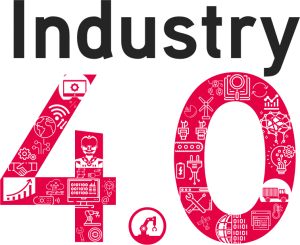

Research and Development 4.0

What is Industry 4.0?
The term Industry 4.0, or the fourth industrial revolution, refers to a further development through the entire value chain process in the manufacturing industry.
Following on from the first 3 ‘industrial revolutions’, where manufacturing has seen the introduction of steam-powered mechanical manufacturing, mass production electrical manufacturing and IT automated production, Industry 4.0 could open up major opportunities for manufacturing, some of which might qualify for R&D tax relief.
What does Industry 4.0 look like?
Industry 4.0 focuses on the adoption of intelligent products and production processes. Factories are feeling the pressure needing to deliver rapid product development, flexible production, as well as complex environments. As manufacturing has already taken a turn towards digital transformation, many businesses are now looking at the next level of technology to further enhance these areas, including;
How does this affect me?
The great news is that Industry 4.0 could open up major opportunities for manufacturing.
For example, new ways for companies to integrate their customers’ needs and preferences into their development and production processes, enabling personalisation, customisation and local production. In some cases, it will make it easier to analyse machine data, helping to enhance quality and avoid faults in the production process.
This will be particularly beneficial to SMEs, as they have the potential to build new industry 4.0 processes from scratch. Large companies, by contrast, have a greater problem of data integration across different business segments.
Keep in mind however, that SMEs seeking to develop, integrate and extend industry 4.0 technology and processes into their business to give them a competitive advantage, face a number of challenges.
Where do I go from here?
The main point of contention, especially for SMEs, occurs when discussing the scale of costs and implementation of the ‘Fourth Industrial Revolution’. Ensuring all your processes and equipment are in line with an integrated system takes time, planning and investment.
What many fail to take into account is that majority of the challenges your business will be faced with fall within the boundaries of R&D Tax benefits, allowing you to reduce some financial risk to innovate.
R&D tax credits can often result in significant cash repayments from HMRC. If you can demonstrate that you’ve changed processes, software or technically scratched your head at something, you can potentially open a revenue stream to further adopt key elements of Industry 4.0.
This is where TBAT can help; we aim to simplify the R&D tax claim process with minimal disruption to your business. We have consultants with expertise in a wide variety of science, engineering, software and healthcare disciplines. TBAT do the work so you can receive the credit, ‘bridging the technical expertise gap’ between you the Client and your Accountant to submit a successful and maximised R&D tax credit scheme claim to HMRC.
If you’ve already began the journey of Industry 4.0, or not even started, and want to understand more about R&D Tax Credits, click here to arrange a consultation with one of our experts.
Since 2022, HMRC’s Mandatory Random Enquiry Programme (MREP) has been reviewing R&D tax relief claims to reduce error and fraud. While the programme is effective in improving compliance, it has also caused a significant drop in SME claims. This article examines the impact of MREP on SME behaviour, explores why businesses are withdrawing from claiming, and questions whether the programme is supporting innovation or discouraging genuine R&D activity.

We take an in-depth look at the latest R&D Tax Credit Statistics, covering the period ending March 2024, highlighting key updates and trends in the R&D tax relief landscape. It covers changes to the SME and RDEC schemes, the introduction of new requirements such as the Claim Notification process, and developments in HMRC compliance through the Mandatory Random Enquiry Programme.

Assists organisations in accessing research and development grant funding across a range of UK and EU schemes and industry sectors.
Get In Touch